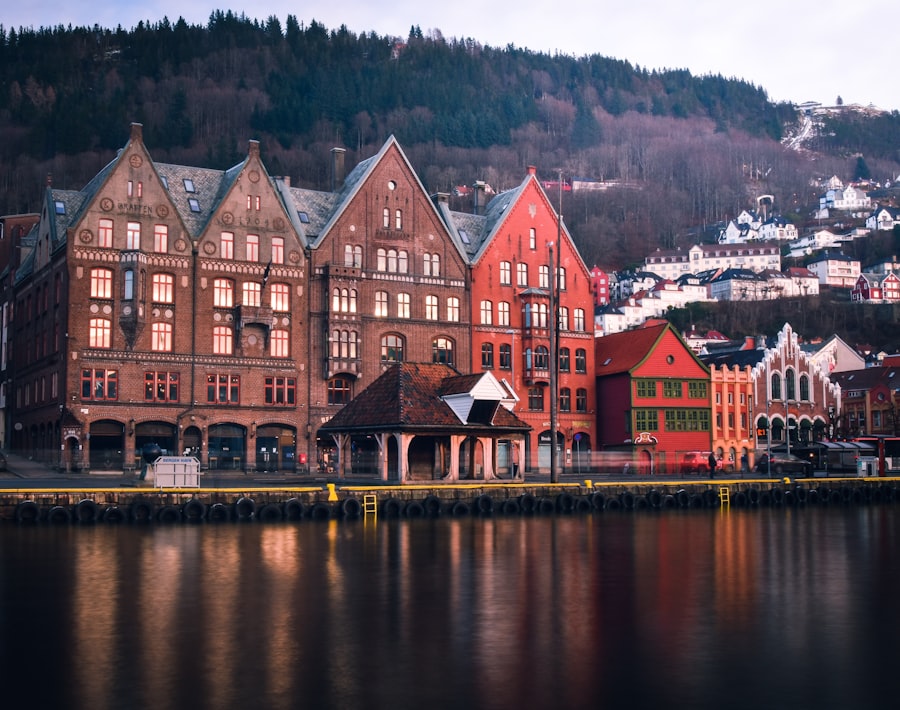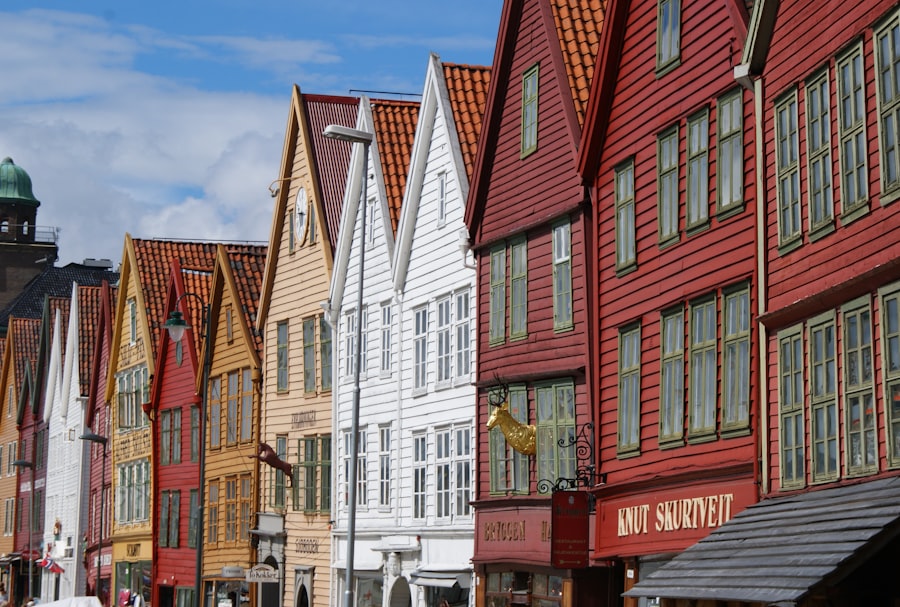Smalahove, a traditional dish hailing from the rugged landscapes of Western Norway, is a culinary experience that embodies the essence of Norwegian heritage. This unique delicacy, made from the head of a sheep, is not merely a meal; it is a celebration of culture, history, and the deep-rooted traditions of rural life in Norway. For those unfamiliar with this dish, the sight of a smoked sheep’s head may evoke curiosity or even apprehension.
However, for many Norwegians, smalahove represents a cherished connection to their ancestry and the agricultural practices that have sustained their communities for generations. The preparation and consumption of smalahove are steeped in ritual and significance. Traditionally served during festive occasions, particularly around Christmas and New Year, this dish is often accompanied by a hearty serving of potatoes and rutabaga.
The experience of enjoying smalahove goes beyond mere sustenance; it is an opportunity to gather with family and friends, sharing stories and laughter over a meal that has been lovingly prepared. As we delve deeper into the history and cultural significance of smalahove, we will uncover the layers of meaning that make this dish a true emblem of Norwegian identity. Your journey to a smooth relocation starts here. Talk one-on-one with a Norway Relocation specialist and turn your plan into a reality. https://norwayrelocation.no/one-hour-strategy-session/
Summary
- Smalahove is a traditional delicacy in Western Norway, made from the head of a sheep.
- Smalahove has a long history and cultural significance in Norwegian cuisine, often associated with farming and rural traditions.
- The process of preparing and smoking a Smalahove involves careful attention to detail and traditional methods.
- The best places to enjoy Smalahove in Western Norway include local farm restaurants and traditional eateries.
- Smalahove is a symbol of Norwegian farming and rural traditions, representing the country’s rich culinary heritage.
The History and Cultural Significance of Smalahove in Norwegian Cuisine
The origins of smalahove can be traced back to the rural communities of Norway, where resourcefulness was essential for survival. In times when food scarcity was a reality, every part of the animal was utilised, and nothing went to waste. The practice of preparing sheep’s head as a dish reflects the ingenuity of Norwegian farmers who sought to honour their livestock while ensuring that their families were well-fed.
Over time, smalahove evolved from a necessity into a celebrated delicacy, often associated with festive gatherings and communal feasts. Culturally, smalahove holds a significant place in Norwegian cuisine as it embodies the values of sustainability and respect for nature. The dish is not only a testament to the agricultural practices of the past but also serves as a reminder of the importance of preserving traditional foodways in an increasingly globalised world.
As Norwegians continue to embrace their culinary heritage, smalahove stands as a symbol of pride, connecting generations through shared meals and stories that celebrate their roots.
The Process of Preparing and Smoking a Smalahove

Preparing smalahove is an intricate process that requires skill and patience. The journey begins with selecting a high-quality sheep’s head, which is then carefully cleaned and prepared for cooking. Traditionally, the head is salted and left to cure for several days, allowing the flavours to develop while preserving the meat.
This curing process is essential for achieving the distinctive taste that characterises smalahove. Once cured, the head is subjected to smoking, which imparts a rich, smoky flavour that enhances the overall experience. The smoking process can vary depending on regional practices, with some opting for traditional wood chips while others may use modern smoking techniques.
After smoking, the smalahove is typically boiled or steamed until tender, resulting in a dish that is both succulent and flavourful. The meticulous preparation involved in creating smalahove reflects the dedication of those who continue to uphold this culinary tradition.
The Best Places to Enjoy Smalahove in Western Norway
For those eager to experience smalahove in its authentic form, Western Norway offers numerous establishments where this traditional dish can be savoured. Many local restaurants pride themselves on serving smalahove as part of their seasonal menus, often prepared according to age-old recipes passed down through generations. One such place is the charming town of Voss, known for its stunning landscapes and vibrant food culture.
Here, visitors can find eateries that specialise in traditional Norwegian fare, including expertly prepared smalahove. Another notable destination is Bergen, where seafood and local delicacies reign supreme. Several restaurants in this picturesque city offer smalahove during specific times of the year, allowing diners to indulge in this unique dish while enjoying views of the surrounding fjords.
For those seeking an immersive experience, participating in local food festivals or events dedicated to Norwegian cuisine can provide an opportunity to taste smalahove alongside other regional specialities.
Smalahove: A Symbol of Norwegian Farming and Rural Traditions
Smalahove is more than just a dish; it is a symbol of Norwegian farming and rural traditions that have shaped the country’s identity. The practice of raising sheep has been integral to Norwegian agriculture for centuries, with farmers relying on these animals for sustenance and livelihood. By embracing every part of the sheep, including the head, Norwegians demonstrate their commitment to sustainable farming practices and their respect for the animals that provide them with nourishment.
In many ways, smalahove encapsulates the spirit of rural life in Norway. It serves as a reminder of the hard work and dedication that goes into farming while highlighting the importance of community and shared meals. As urbanisation continues to transform Norway’s landscape, preserving dishes like smalahove becomes increasingly vital in maintaining connections to the past and celebrating the agricultural heritage that has defined the nation.
The Unique Flavors and Textures of Smalahove

The flavours and textures of smalahove are truly distinctive, offering a culinary experience unlike any other. The combination of smoky undertones from the smoking process and the rich, tender meat creates a harmonious balance that delights the palate. Each bite reveals layers of flavour that reflect the care taken during preparation, making it a dish that is both satisfying and memorable.
The texture of smalahove is equally noteworthy; the meat is succulent and tender, while the gelatinous parts provide a unique mouthfeel that adds depth to the dining experience. This contrast between textures enhances the overall enjoyment of the dish, inviting diners to savour each morsel slowly. For those who appreciate bold flavours and hearty fare, smalahove presents an opportunity to explore the culinary landscape of Norway in a truly authentic way.
How to Eat Smalahove: Traditional Serving and Eating Etiquette
Eating smalahove is an experience steeped in tradition and etiquette. Typically served whole or halved on a platter, it is accompanied by sides such as boiled potatoes and rutabaga mash. The presentation itself is striking, showcasing the craftsmanship involved in preparing this unique dish.
When it comes to serving smalahove, it is customary for diners to share from a communal platter, fostering a sense of togetherness and camaraderie. As for eating etiquette, it is important to approach smalahove with respect for its cultural significance. Diners are encouraged to take their time when enjoying this dish, appreciating not only its flavours but also its history.
Traditionally, it is common to use utensils such as forks and knives to carve off pieces from the head, allowing each person to customise their portion according to their preferences. Sharing stories and laughter while enjoying smalahove enhances the communal aspect of dining, making it an occasion to remember.
Smalahove Festivals and Events in Western Norway
Throughout Western Norway, various festivals and events celebrate smalahove as part of the region’s rich culinary heritage. These gatherings provide an opportunity for locals and visitors alike to come together in appreciation of traditional Norwegian cuisine. One such event is the annual Smalahove Festival held in Voss, where food enthusiasts can indulge in this delicacy while enjoying live music and cultural performances.
During these festivals, attendees often have the chance to learn about the history and preparation methods behind smalahove through workshops and demonstrations led by local chefs and artisans. Such events not only promote awareness of traditional dishes but also foster community spirit by bringing people together over shared meals and experiences. For anyone interested in exploring Norwegian culture through its cuisine, attending a smalahove festival is an unforgettable way to immerse oneself in this culinary tradition.
The Health Benefits and Nutritional Value of Smalahove
While smalahove may be considered an indulgent treat by some, it also offers several health benefits when consumed in moderation. Rich in protein and essential nutrients, sheep’s head provides a hearty source of sustenance for those who partake in this traditional dish. The meat contains valuable vitamins such as B12 and minerals like iron, which are crucial for maintaining overall health.
Moreover, the slow cooking process involved in preparing smalahove allows for maximum flavour extraction while preserving its nutritional value. When enjoyed alongside wholesome sides like potatoes and rutabaga mash, smalahove can contribute to a balanced meal that nourishes both body and soul. As more people seek out authentic culinary experiences that celebrate local ingredients and traditions, understanding the health benefits associated with dishes like smalahove becomes increasingly important.
Smalahove: A Controversial Dish and its Place in Modern Norwegian Culinary Culture
Despite its cultural significance, smalahove has not been without controversy in modern culinary discourse. As dietary preferences evolve and concerns about animal welfare gain prominence, some individuals question the ethics surrounding traditional dishes like smalahove. Critics argue that consuming such unconventional parts of animals may not align with contemporary values regarding food sourcing and sustainability.
However, proponents of smalahove argue that it represents an important aspect of Norwegian heritage that should be preserved rather than discarded. They contend that embracing traditional dishes fosters appreciation for local agriculture while promoting sustainable practices within farming communities. As discussions around food culture continue to evolve, finding common ground between tradition and modern values will be essential for ensuring that dishes like smalahove maintain their place within Norwegian culinary identity.
Exploring the Future of Smalahove: Its Preservation and Evolution in Norwegian Cuisine
Looking ahead, the future of smalahove lies in its ability to adapt while remaining true to its roots. As younger generations become more involved in culinary practices, there is potential for innovation within traditional recipes that honour both heritage and contemporary tastes. Chefs across Norway are beginning to experiment with new flavour profiles or presentation styles while still respecting the essence of smalahove.
Furthermore, initiatives aimed at preserving traditional foodways are gaining traction within Norway’s culinary landscape. By promoting awareness around dishes like smalahove through educational programmes or community events, there is hope for continued appreciation among future generations. As Norwegians navigate their evolving relationship with food culture, embracing both tradition and innovation will be key to ensuring that smalahove remains a cherished part of their culinary heritage for years to come.
In conclusion, whether you are drawn by its rich history or intrigued by its unique flavours, smalahove offers an authentic taste of Norway’s culinary landscape. For those considering relocation or seeking deeper connections with Norwegian culture through food experiences like these, organisations such as the Norway Relocation Group can provide invaluable assistance during your transition. Additionally, if you wish to immerse yourself further into Norwegian culture while learning the language necessary for navigating these experiences seamlessly, consider enrolling in courses at NLS Norwegian Language School in Oslo—where you can enhance your understanding not only of language but also of Norway’s vibrant culinary traditions like smalahove.
Register for a Norwegian class at the NLS Norwegian Language School now!

